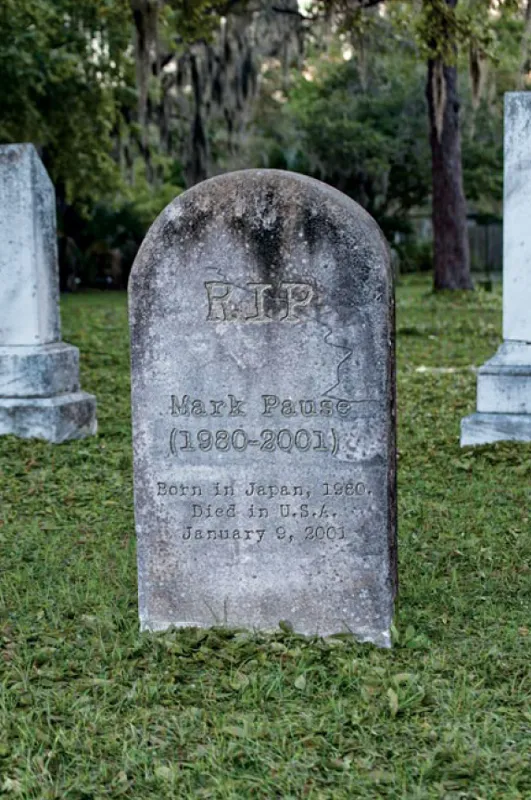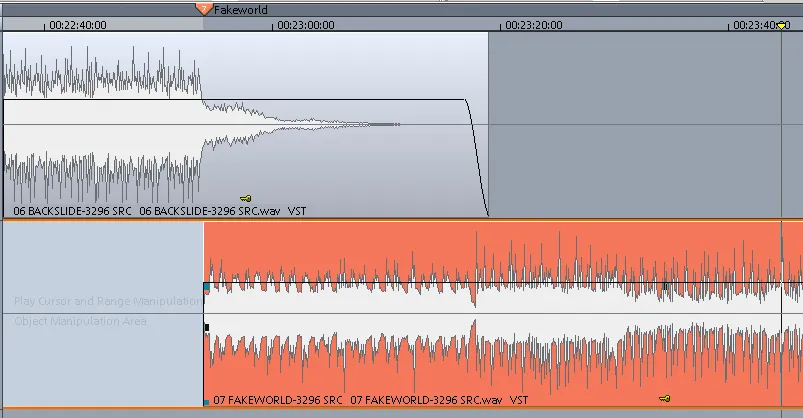![]()
Even Ajax can tell when it’s been Mastered for iTunes!
CHAPTER 1
Assembling the Album iTunes Style
The combination of the iPod, iPhone, iPad and the iTunes software has changed both the way record labels release music and the way people buy and listen to it. iTunes’ greatest asset, the playlist, lets listeners shuffle music or combine songs from different albums and artists at will. iTunes has also changed the status of the traditional record album, which for decades has dominated the music scene. Today, although most artists still release songs in the album format, the single is King.
iTunes vs. CD
When creating masters for both CD and iTunes, be aware of these basic differences:
1) Singles: Every iTunes song becomes available as a single as well as part of an album. This is a bonus, because making iTunes singles is far less expensive than manufacturing CDs: it costs a lot of money to produce, press, release, and market a physical CD with a single song on it. Before iTunes, record labels and producers would think twice about releasing a CD single. Today, making a single is a common practice.
2) Master format: The master for a CD album consists of one audio file, in a proprietary image format, which includes all the gaps between songs, and segues (overlaps) between songs. In contrast, the master for an iTunes album consists of a series of WAV or AIFF files, with the pauses (gaps) between the tunes included at the end of each audio file.
3) Metadata: The metadata for a CD is built into the CD master’s subcode (the subcode is hidden data that controls the player’s display and operation). Metadata includes: ISRC codes; track marks; pause marks; EAN barcode; CD text (album and track titles, genre, artist); and potentially much more, including graphics, though CDs with graphics are very rare. Mastering engineers produce and error-check the CD masters, and encode this metadata. When there is no time for the producer/A&R to personally approve the final reference, the mastering engineer will typically be asked to proofread any changed metadata and then send the master to the duplication plant. The master format can be a simple physical CD, which the plant replicates, automatically transferring the metadata, or a DDP fileset sent to the plant via ftp, containing all metadata.
By comparison, the individual WAV files delivered to iTunes do not contain metadata. Do not try to encode metadata into these files as it may prove confusing and useless as iTunes will not use it. So the artist or producer must deliver metadata separately; they can no longer depend on the mastering engineer to encode metadata. Metadata for an iTunes album must be entered at the online digital distributors’ websites, or, for larger record labels, into forms that can be submitted direct to iTunes. The person responsible for ensuring that this data is accurate, correctly spelling the titles and artists’ names, and submitting this data, has a tremendous responsibility. If you are an artist or producer submitting information, have as many people as possible check the data before submission, use copy/paste to minimize possible typos, and proofread many times over. Changing information that has already been submitted to iTunes is a time-consuming and frustrating process. Proofread that data! Then proofread it one more time. “Measure twice and cut once.”
Not all distribution services accept all metadata. Some may not accept composer or movement information for classical releases.
4) Pause marks: Pause marks on CDs indicate the gap between tunes. These gaps can also contain audio intentionally excluded in shuffle play. Audio in the gap will not make it to the radio either (unless the radio station plays past the pause mark). It is common to use the CD gap for spoken introductions, count-offs, breaths, applause, laughter, and ambience (in live albums). The CD gap also can be used as a hidden track, heard only by listeners playing the entire album.
But there are no pause marks in iTunes, and they may be gone forever. In iTunes, all the “in-between” content appears at the tail of the previous tune, and it will be heard in shuffle play (that can slow down a party). This makes artists hesitant and a bit less adventurous, so you’re less likely to find creative or interesting extras between the tracks of an iTunes album.
A related change brought on by iTunes is that the song length includes the gap length, so royalties charged by the licensing agencies (e.g. Harry Fox) increase, since they license songs by their length. This can get costly with live albums. If you’re low on cash, you could create a song or two called “applause.” But then iTunes will charge anyone who downloads it—scratch that idea!
5) Segues and Gapless Playback: Gapless playback on CD is simple and built right into the format. It permits segues (overlaps or crossfades) between tunes. When the CD was King, listeners were not confused cuing to a song and hearing the fade of the previous song mixed over the head of the next. iTunes users can rip singles from their CDs, then put them into their own playlist; but CDs with segues make it hard to extract just one song for multi-album playlists.
iTunes, version 7 and later, and the more recent models of iPods both support gapless playback, as long as crossfade playback is turned off in the preferences. If crossfade playback is turned on, then the checkbox called "part of a gapless album" must be checked for each individual tune. A bit confusing, but most people do not turn on crossfade playback.
Now that every song can be downloaded as a single, artists have become increasingly reluctant to create an album with segues. They fear that listeners will not understand a song that does not “complete” (i.e., come to a well-defined stop or fade out), or whose beginning contains part of the end of the previous track. In the image on page 17 the track mark indicates both the beginning of the next track and the end of the previous, which is where the first song would be cut off when it is downloaded as a single. A listener playing from this track mark will hear both the end of the previous song and the beginning of the next. When I master an album and suggest a segue to the producer, he often rejects it for these reasons. But crossfades display colors in the artist’s creative palette—the artist’s right to be different! A good solution is to create additional singles that do not contain the segues, also known as the “Radio Version.” Since albums have a fixed price, let’s include the single versions as bonus tracks—though when you hear excerpts from Dark Side of the Moon on the radio, stations will usually play the album version and fade out during the segue. Now that broadcasters can use music from iTunes, will they discover the Radio Version bonus tracks?
Your Tracks Are Now in the iCloud
Apple, Inc. announced their iCloud service on June 6, 2011. If an iTunes music customer signs up for an iCloud account, then purchases a track on iTunes from one device (e.g. iPhone, iPad), it will automatically download on up to 10 devices or computers that use the same iTunes store account (for example, another Apple computer, iPhone, iPad, iPod Touch, etc).
CD Text and Gracenote
When you insert a CD in a modern car player, it displays the artist and track titles. This feature, called CD Text, is part of the metadata encoded by the mastering engineer. iTunes can write CD Text, which becomes useful when cutting a custom CD for the car. But iTunes is not able to directly read CD Text from an audio CD. The only way to transfer metadata from a CD is to use a third-party applescript (which can be found at our links page) to import the information into iTunes’ database.
Apple decided not to use CD text for a very good reason: a lot more data is available about artists, music and genres than can fit on an audio CD, and there is no way to keep this data current—what if the band changes its name? iTunes gets its metadata through an online database run by Gracenote. If your computer is online when you insert a CD, within moments the CD is identified and you see the artist, title and other information. When iTunes is not connected to the Internet, it may read this information from its cache if the CD was previously inserted in your computer.
Beware of Identical Timing
Gracenote identifies the CD by the song lengths, pauses, and distribution of the song timings. But because many CDs have been produced in the past few decades, it’s possible for two completely different CD albums to have the identical timing information. That’s why it’s important for you or the mastering engineer to confirm that there is no identically timed CD already in the Gracenote database before sending the master for replication. Insert the CD reference into iTunes and make sure it does not come up with someone else’s name. To guarantee that iTunes performs the Gracenote inquiry, choose Advanced/Get Track Names. If it displays another CD title, ask the mastering engineer to minutely change the gap or length anywhere on the CD, which will usually fix the problem. If Gracenote has registered more than one album with identical timings it will usually display a list of candidates from which you must pick. Incidentally, every possible CD single has already been registered in Gracenote’s database, so your new CD single will display the wrong title until you register it. This can cause a great deal of confusion!
How to Submit Metadata to Gracenote
There are two ways to submit metadata to Gracenote: the slow, unreliable way, and the dependable, secure way. The slow way is to insert the master CD into iTunes and choose Advanced/Submit CD Track Names. This could take days, weeks or months because Gracenote is overwhelmed with such requests from around the world. If you misspell any piece of metadata, there is no direct way for you to correct it except to try to submit the names again. Imagine how that must confuse Gracenote! And Gracenote will not contact you about any submissions. Another reason to avoid this method is that anyone can take your pressed CD and submit bogus artist or song information (I leave the possibilities to your imagination).
The most reliable method to submit CD metadata is through the Gracenote Content Partner Program. Major record labels and some mastering houses are members of this program; they will securely encode the metadata and submit it to Gracenote on a priority basis. This locks out any malicious users from trying to change your metadata. There is also a mechanism to revise and resubmit the data, should a spelling or other error turn up. This correction propagates quickly through the Internet.
A Big Day at the Mastering House: Mastering for iTunes, CD and LP
Most artists continue to press CDs in addition to offering their music as digital downloads. Sometimes mastering engineers have to make three masters—for LP, CD and iTunes—of the same album, each with its unique technical requirements. Here’s my approach to dealing with multiple masters:
1) If the client’s source files are not already at double sample rate, upsample all the client’s mix files to 3296 using Weiss’s Saracon software. If the client’s files are already at 88.2 kHz, we work at 88.2 kHz sample rate. (Other mastering engineers may effectively “upsample” by using DACs and ADCs as described in Chapter 2).
2) Place these files into a 96 kHz Playlist (VIP is the term that Sequoia uses. Other Digital Audio Workstations (DAWs) may use the terms EDL, Session, or Project). Track marks and CD Text information can be entered into Sequoia at any step in the process. I take advantage of that by getting all the metadata from the client in advance (if possible), placing track marks and entering the CD Text into the 96 kHz Playlist.
3) If any of these files are supposed to overlap another, I create the segue at this point, then listen and adjust until the client and I are happy with the sound, as pictured below.
In this Sequoia Playlist, each track is stereo, but we can view only one channel to save space and make things easy to read. The top track contains the end of song #6, which overlaps the beginning of song #7. Note the track mark at the beginning of song #7. The album version of song #6 does not complete, and song #7 contains the end of song #6 as well as the beginning of #7.
4) Next, I apply any desired digital processing available in the DAW to the source elements. I then feed the processed audio signal from Sequoia via a digital route to any external digital or analog processors. To feed analog processors, I first convert the signal to analog, then, after processing, back to digital again. Working at double sample rate minimizes the losses of conversion, and the higher sample rate warms up the sound by reducing alias distortion when clipping or compressing. I apply different compressor, equalizer, or other processor settings to each song so it gets its own proper treatment and level. The return from the external chain then gets recorded into a new Sequoia track to a capture file.
5) When songs are segued together it is often valuable to capture each song without the crossfade for radio or single versions. During the mastering session, when I encounter a segue (as in the above figure), I mute the second track and capture the end of the first “clean” into its own WAV file. Then I go back before the beginning of the second track, mute the first, and capture from that point on. Now I’ve created two independent capture files that can later produce individual single WAVs or be combined to produce the segue. This technique also leaves a...



